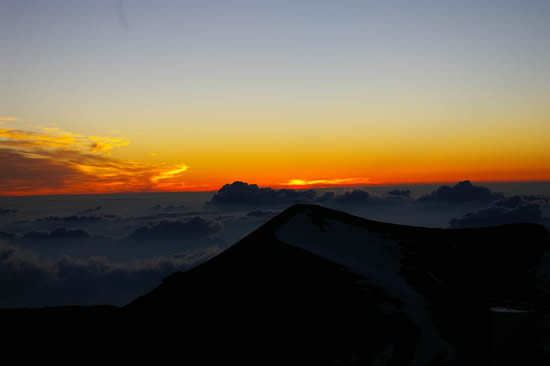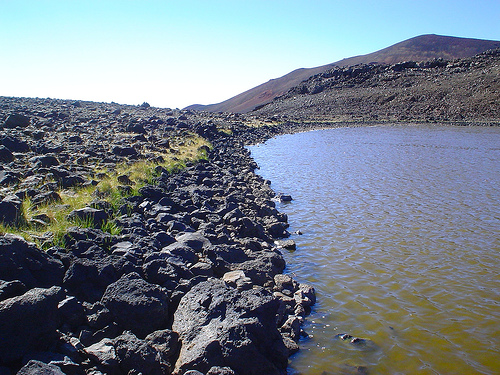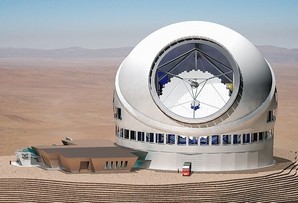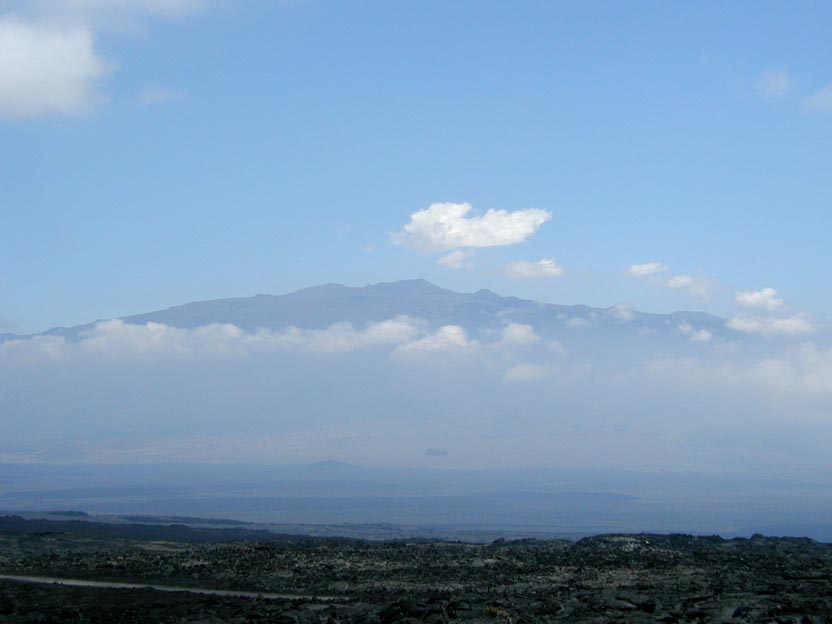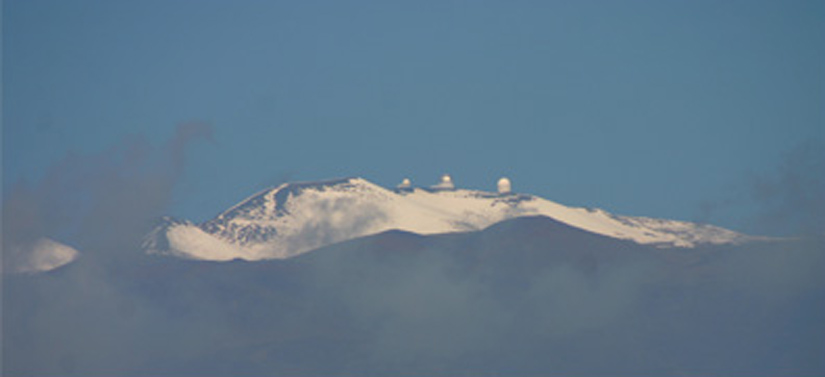Blog
News, updates, finds, stories, and tidbits from staff and community members at KAHEA. Got something to share? Email us at: kahea-alliance@hawaii.rr.com.
- In 1998, the Hawai’i State Auditor issued a report criticizing the UHIFA’s and BLNR’s management of Mauna Kea. The Auditor found that the UHIFA’s focus on telescope construction was “at the expense of neglecting the site’s natural resources.” Among the effects of the construction were: the damage or destruction of historic sites and Hawaiian family shrines; the destruction of the Wekiu Bug’s habitat; trash and construction debris left on the summit; and abandoned facilities and equipment.
- A court-ordered EIS completed by NASA in February 2005 concluded of the telescopes: “From a cumulative perspective, the impact of past, present, and reasonably foreseeable future activities on cultural and biological resources is substantial, adverse and significant…
Bad Mauna Kea Bills Move Through Legislature
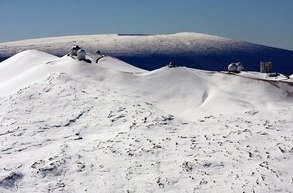
From Rob Perez’s excellent coverage of the Mauna Kea bills currently moving through the state legislature:
Two bills (HB 1174 and SB 502) giving UH authority over the 11,000-plus acres of ceded lands it leases from the Department of Land and Natural Resources have been approved by two committees each in the House and Senate, worrying environmentalists, Native Hawaiian groups and others.
The bills permit UH to regulate public and commercial uses of the land, and critics believe that authority would be broadly applied. Lawmakers call the legislation a “work in progress.”
“This is a very, very bad idea,” said Marti Townsend, program director of KAHEA: The Hawaiian-Environmental Alliance.
Critics say transferring such oversight to UH would be a huge mistake in light of the school’s poor track record on Mauna Kea and the dangerous precedent the action would set, essentially turning over responsibility for the land to its leaseholder or developer.
See full article at: http://www.honoluluadvertiser.com/article/20090222/NEWS03/902220351/1001
Kanaka Scholars Stand Up for Mauna Kea
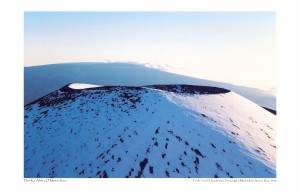 Mahalo nui loa to the dozens of Kanaka Maoli (Native Hawaiian) scholars who submitted this statement in support of protecting the sacred summit of Mauna Kea. The University of Hawaii is seeking to take over control of the summit from the Department of Land and Natural Resources because they lost the lawsuit in 2007 that held the DLNR must manage the summit for the conservation of the natural and cultural resources there, not telescope construction. For 40 years, the University of Hawaii has facilitated the destruction of the public trust lands on the summit by foreign corporations that own and operate dozens of telescopes. You can take action, too, by submitting testimony online – just click here.
Mahalo nui loa to the dozens of Kanaka Maoli (Native Hawaiian) scholars who submitted this statement in support of protecting the sacred summit of Mauna Kea. The University of Hawaii is seeking to take over control of the summit from the Department of Land and Natural Resources because they lost the lawsuit in 2007 that held the DLNR must manage the summit for the conservation of the natural and cultural resources there, not telescope construction. For 40 years, the University of Hawaii has facilitated the destruction of the public trust lands on the summit by foreign corporations that own and operate dozens of telescopes. You can take action, too, by submitting testimony online – just click here.
Kanaka Maoli Scholars Against Desecration
Statement on Mauna Kea – February 17, 2009
We declare our opposition to SB 992/HB 1174 and SB 502/HB 1370 and any other legislation bills that would transfer Mauna Kea to the University of Hawai`i (UH). These current legislative proposals would give the UH complete management authority over Mauna Kea and allow implementation of a plan that has no limit on telescope construction, would close public access to the summit, and exempt UH from public oversight in the name of development.
Mauna Kea is a sacred summit, which is already being desecrated by the existing science telescopes. The Hawai`i revised statute 711-1107 on desecration specifically states that no one may commit the offense of desecrating “a place of worship or burial,” and the statute defines “desecrate” as “defacing, damaging, polluting, or otherwise physically mistreating in a way that the defendant knows will outrage the sensibilities of persons likely to observe or discover the defendant’s action.” If this legislation passes, state legislators would be violating their own state law.
These legislative proposals also interfere with on-going litigation on the current regulations governing Mauna Kea. We would also like to remind state representatives and the general public that in the recent Third Circuit Court case regarding the management of Mauna Kea, the court ruled in favor of the Plaintiffs—Kealoha Pisciotta, President of Mauna Kea Anaina Hou; Debbie Ward and Nelson Ho, Co-Chairs of Mauna Kea Issues Committees, Sierra Club Hawai`i Island Chapter; Ali`i `Ai Moku, Paul K. Neves of the Royal Order of Kamehameha I, Moku of Mamalahoa Heiau Helu `Elua; and Clarence Ku Ching, individual Native Hawaiian Practitioner—and against the UH and the state Board of Land and Natural Resources (BLNR) for violation of the regulations protecting Mauna Kea as a conservation district. This lawsuit is currently on review before the Intermediate Court of Appeals (ICA) after the University appealed the lower court ruling against them. Though the University only recently withdrew its appeal from the ICA, counterclaims that go to the fundamental merits of this issue remain before the ICA.
Besides blatant desecration, and interference in on-going litigation, the negative environmental effects are numerous. As noted in the Testimony of the Plaintiffs regarding this legislation, two reports by the State Auditor have found that UH’s misuse and the BLNR’s failed oversight is “inadequate to ensure the protection of natural resources, and neglected …the cultural value of Mauna Kea.” Their report further stated that the University’s Institute for Astronomy “focused primarily on the development of Mauna Kea and tied the benefits gained to its research program,” and that its focus on telescope construction has been “at the expense of neglecting the site’s natural resources.” Also, in 2005, an Environmental Impact Statement required by federal court order found that the cumulative impact of telescope activities on Mauna Kea has had a “substantial, adverse, and significant” impact.
The current proposals also violate the land claims of the Hawaiian nation. These legislative attempts to transfer a portion of the Hawaiian Kingdom Crown and Government Lands of which Mauna Kea is a part, is in direct contravention of the Hawai`i State Supreme Court’s holding in OHA v. Housing and Community Development Cororation of Hawai`i, 2008. The Hawaii Supreme Court barred the transfer of this land base by the state. If this legislation passes, state legislators would be violating the state Supreme Court ruling.
This exploitative venture proposed by this legislation must be stopped because the entire scheme promotes the ongoing violation of the sacred summit of Mauna Kea; it would be irresponsible and bad public policy, as well as a continued abuse of state power.
J. Leilani Basham, Ph.D., Assistant Professor, Hawaiian Studies, University of Hawai`i at West O`ahu
Kamanamaikalani Beamer, Ph.D., Mellon-Hawai`i Postdoctoral Fellow, Kohala Center
Maenette K.P. Ah Nee-Benham, Ed.D., Dean of Hawai`inuiakea School of Hawaiian Knowledge, University of Hawai`i, Mānoa
Kealani Robinson Cook, Ph.D. Candidate, Department of History, University of Michigan
J. Noelani Goodyear-Ka`ōpua, Ph.D., Assistant Professor, Political Science, University of Hawai`i at Mānoa
Lisa Kahaleole Hall, Ph.D., Assistant Professor, Women’s Studies, Wells College
Sydney Lehua Iaukea, Ph.D., Mellon-Hawai`i Postdoctoral Fellow, Kohala Center
Kū Kahakalau, Ph.D., founder and director of Kanu o ka ‘Āina New Century Public Charter School
Lilikalā Kame`eleihiwa, Ph.D., Professor, Kamakakūokalani Center for Hawaiian Studies, University of Hawai`i at Mānoa
Val Kalei Kanuha, Ph.D., M.S.W., Associate Professor of Sociology, University of Hawai`i at Mānoa
Kēhaulani Kauanui, Ph.D., Associate Professor, Anthropology and American Studies, Wesleyan University
Brandy Nalani McDougall, Ph.D. Candidate, English, University of Hawai`i, Mānoa
Noenoe K. Silva, Ph.D., Associate Professor, Political Science, University
of Hawai`i at Mānoa
Ty Kawika Tengan, Ph.D., Associate Professor, Anthropology and Ethnic Studies, University of Hawai`i at Mānoa
Lani Teves, Ph.D. Candidate, Program in American Culture, University of Michigan
Haunani-Kay Trask, Ph.D., Professor, Kamakakūokalani Center for Hawaiian Studies, University of Hawai`i, Mānoa
Liza Keanuenueokalani Williams, Ph.D. student, New York University
Defend the Sacred Summit of Mauna Kea
Your help is needed right now. Lobbyists for the University of Hawaii, backed by powerful foreign telescope-developers, are pushing hard to take control of Mauna Kea’s public trust resources and override the conservation laws currently barring further development on our sacred summits. If successful, they will use this authority to write their own rules, approve their own permits, and shut-out the public. Public trust resources cannot be protected if the developers are allowed to police themselves.
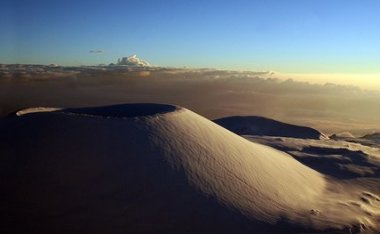
You can help stop UH’s land-grab on Mauna Kea’s sacred summit. After 40 years of mismanagement, tell the State Land Board and the Legislature that enough is enough!
“The University’s lobbyists will say anything to get their way. I heard them tell Legislators they had community consent. I am from the community and tell you what, they have nothing of the sort.” — Kukauakahi Ching, Native Hawaiian Practitioner.
Our sacred summits — Mauna Kea and Haleakala — are protected by law as conservation districts. These are public trust ceded lands–Hawaiian lands–held by the state in trust for the people of Hawaii. Yet, today Mauna Kea’s public lands are exploited by foreign corporations and the University, who are profiting from telescope activities on the summit at the public’s expense.
“The rent from the foreign telescope-owners is 30 years past due–they have paid only $1 a year to misuse Mauna Kea. If the state had been collecting the $50 million dollars a year from these foreign telescope-owners, like we suggested to them years ago, we would not have these budget shortfalls now. Remember, $50 million in 1 year is $100 million in just 2 years. They owe the people of Hawaii for 30 years of back rent. How dare they suggest to short-change the taxpayers now.” –Kealoha Pisciotta, President Mauna Kea Anaina Hou.
Forty years of uncontrolled telescope construction has desecrated cultural sites, contaminated the ground above the primary aquifer, and destroyed 90% of the endemic Wekiu’s habitat. Today, developers are vying to build two new telescopes (along with roads, parking lots, office buildings, and gift shops) on undeveloped habitat around the summit area. One of them — owned by the California Thirty Meter Telescope Corporation — is larger than all the current telescopes combined and will bulldoze the last pristine peak near the summit.
The only thing stopping them is the law. That is why the University is working hard to overturn the laws that currently protect our sacred summits and limit telescope construction. Two courts of law and two state audits have already found that the telescope industry violated the state and federal laws meant to protect Mauna Kea. The only way their future telescope construction plans can go forward is for the University and the telescope developers to change and exempt themselves from these protective environmental laws.
This latest bid to take over Mauna Kea has two fronts:
1. Pressure the Land Board to adopt an illegitimate management plan that limits public access, dictates religious ceremony, and allows UH and telescope developers to pocket public money,
2. Lobby the Legislature to pass one of four bills that will hand-over authority for managing Mauna Kea to the primary developer of the summit, the University of Hawaii.
All of it comes down to the University’s same, long-sought goal: make it easier to exploit Mauna Kea for money. The latest proposal on the table would allow the University to restrict public access (including how and when Hawaiians may worship at the sacred summit), pocket all the money made on Mauna Kea, and exempt themselves from public oversight. This is a public policy and legal nightmare!
“The University wants to gate the road to Mauna Kea–the road was paid for by taxpayers, it’s a public road. The University wants to require Hawaiians to get a permit to worship–Mauna Kea belongs to Ke Akua, they cannot lock the people out of the temple. Even if Hawaiians could get a permit, it would mean they couldn’t bring their non-Hawaiian friends and ohana to ceremony. This is discrimination! Who is the University to say who can and cannot worship?” — Paul Neves, Alii Ai Moku, Royal Order of Kamehameha I.
Your voice can help preserve the sacred temple and delicate ecosystem of Mauna Kea. Take action now to tell the Legislature and the Land Board that Mauna Kea is still not for sale.
What a month for the mountain...
All in the same month! (The good, the bad, and the ugly):
- The “Na Kupuna Council O Moku O Keawe”, the Association of Hawaiian Civic Clubs and the Mayor-Elect for Hawaii Island came out in support of protecting Mauna Kea from uncontrolled telescope construction. (Maika’i!)
- Proponents moved forward with plans to seek the construction the new, massive Thirty Meter Telescope proposed for Mauna Kea, despite the fact that there is NO court-mandated mangement plan in place to protect cultural and environmental resources of the mountain. (Bad)
- The Land Board agreed to hand-over management authority of the Natural Area Reserve on Mauna Kea to the proponent of all the telescope construction on the summit: The University of Hawaii. (Ugh. Lee.)
On this last item, over 400 of you submitted letters to the Land Board opposing this give-away.
But with glossy photos of the sacred summit and empty promises to better protect the unique resources of the summit, the University’s self-appointed advisory group called the “Office of Mauna Kea Management” lulled Land Board members into believing the University has the expertise and motivation to protect the Natural Area Reserve on Mauna Kea.
The community knows better. The University’s presence on the summit has only led to 40 years of over-development, loss of native habitat, and interference with traditional cultural practices.
The Reserve should not be managed by the University in any way. The mission of the Mauna Kea Reserve is to protect the natural and cultural resources of the area, which is in direct conflict with the University’s mission to expand telescope activities on the summit. In fact, the Reserve was established and removed from the University’s control in 1981 precisely because the significant resources there needed more protection from the University’s telescope construction.
The Reserve on Mauna Kea protects a unique and threatened mountainous desert habitat and Hawaii’s only alpine lake, Lake Waiau. The Reserve includes the largest adze quarrry in the Pacific, ancient and modern burials, and Queen Emma’s shrine. These are public trust lands–Hawaiian lands held by the state in public trust for the people of Hawaii. Protecting this area needs management by experts in land conservation and cultural resources, not telescope construction.
The University has an appalling record of protecting resources while it constructed over 50 telescope and support structures on Mauna Kea. A 2005 EIS confirmed that the cumulative impact of 30 years of telescope activity on the cultural and natural resources of Mauna Kea has been “substantial, adverse and significant.” And this trend continues today, despite the mantra there is “a new management paradigm” on Mauna Kea. Just as it has done many times before, the University is currently pushing to draft a management plan on its own terms, not the community’s, while at the same time entertaining the construction of a new massive telescope on the last pristine plateau of Mauna Kea.
The University has long sought more direct control over the mountain to further its long-standing financial interest in developing the summit for telescopes. This week, the Land Board’s decision brought the University one step closer to consolidating its control over the summit.
But there are many opportunities coming up to reign in the University and telescope activity on Mauna Kea. Stay tuned to help out in the effort to uphold the protections already on the books for Mauna Kea. In January, we expect the University to once again seek the Legislature’s approval to change the law to allow continued telescope expansion on the summit. The University has tried and failed many times before to command complete control over the summit, but each time the community has successfully educated decision-makers on good policy-making and upheld the protections for Mauna Kea.
Let’s get ready to do it again this year!
Protect Mauna Kea Summit Natural Area Reserve
The Mauna Kea Ice Age Natural Area Reserve protects a unique and threatened mountainous desert habitat and Hawaii’s only alpine lake, Lake Waiau. The reserve includes the largest adze quarrry in the Pacific, ancient and modern burials, and Queen Emma’s shrine. These are public trust lands–Hawaiian lands held by the state in public trust for the people of Hawaii.
Now, with only 5 days notice to the public, the Land Board has announced they will consider giving away authority to manage Mauna Kea’s Ice Age Natural Area Reserve to the primary developer of the mountain–the University of Hawaii.
The Land Board will make their decision this Friday. You can click here to tell them: “NO!”
The University has a long-standing interest in developing the public trust lands of the mountain, and benefits financially from the construction and lease of telescopes on Mauna Kea. For 30 years, they have been given free-reign to oversee their own activites with little accountability. Financial interest and lack of oversight have resulted in substantial, significant, adverse impacts to Mauna Kea’s unique and threatened habitats, species and sacred cultural sites.
The reserve lies directly adjacent to the University of Hawaii’s telescope developments. The reserve was created and removed from University control in 1981 because of its significant resources.
The University has long sought more direct control over the mountain. In centralizing oversight under the UH umbrella, they seek to avoid outside accountability, and making future developments easier to push through.
Five Days Notice?
A mere five days public notice is not enough–there can be no true public consultation, community hearings, or public consent to this massive land giveaway in five days! Which makes us wonder: what’s the rush?
What’s Really Going On?
Today, a new billion-dollar, football stadium-sized telescope is being proposed for the summit–the Thirty Meter Telescope, or TMT. The University is seeking more control–and fast–to allow this four-acre development to move forward as scheduled.
In addition to seeking control of the Ice Age Natural Area Reserve adjacent to the telescopes, UH is seeking new legislation giving them rulemaking authority over the entire summit area.
As it stands, a 2007 state court ruling says the Land Board must prepare and approve a comprehensive management plan to protect Mauna Kea’s cultural sites and natural habitats before allowing any more bulldozers. The intent is to allow time and a honest process for charting a future for the sacred summit of Mauna Kea.
Instead, eager to move forward with the TMT, UH is writing one for themselves. In fact, UH has written a whole series of false “management plans” over the past 20 years and set up a hand-picked advisory board they call the “Office of Mauna Kea Management” (OMKM). The 3rd Circuit Court has struck down every one of these previous UH “management plans.” But UH is not taking “no” for an answer.
Today, UH is pressuring the Land Board to approve its latest false “management plan”– to clear the way for the gigantic Thirty Meter Telescope (TMT) complex the last undeveloped plateau of Mauna Kea’s summit area.
Public Trust Resources for Public, not Private, Benefit
It is the job of the Land Board to protect, conserve and properly manage the public trust lands in the interest of the public and the Native Hawaiians. This means “conservation over development” is bound in their public duty. They are to be independent public servants, serving the public trust resources which are entrusted to them, for the public interest. Board members cannot have an interest–financial or other–in any decision before them.
The University has no such mandate. The University has deeply entrenched financial interests in the continued development of Mauna Kea. The public trust lands of Mauna Kea are being rented for only $1 a year–far less than the fair market value required by law. Under this sweetheart deal, the University takes the public’s lands and resources and offers them to some of the riches countries on earth. But the Public’s resources are not the UH to give away or sale for their profit and gain.
“[UH] focused primarily on the development of Mauna Kea and tied the benefits gained to its research program… at the expense of neglecting the site’s natural resources.” – State Auditor’s Report
Can’t Win in Court? Try Change the Law in Your Favor–Or Ignore the Law Altogether
In 1968, the people of Hawaii agreed to allow one telescope to be built atop Mauna Kea. Today, more than 50 telescope and support structures cover the sacred summit–built without the consent of Native Hawaiians and local communities. For 30 years, local leaders and organizations have united to defend the once-pristine resources of Mauna Kea’s sacred summit from the harms of uncontrolled telescope expansion. They have successfully upheld the law and stopped several illegal and aggressive UH plans for expanded telescope construction.
The people won and the Land Board and the University lost mulitple times in court. The court has affirmed the Land Board’s duty to protect Mauna Kea. Now, UH is seeking to change the rules to give themselves more direct control of Mauna Kea. The University seeks to create a new bureaucracy under the UH system with authority to “manage” the public trust resources of Mauna Kea, despite their already dismal record.
Conflicts of Interest Result in Poor Oversight and Irreparable Harm
- The Hawai‘i State Auditor found UH’s program of self-oversight “inadequate to ensure the protection of natural resources” and “neglected …the cultural value of Mauna Kea.”
- The Auditor’s report stated the University “focused primarily on the development of Mauna Kea and tied the benefits gained to its research program,” and that its focus on telescope construction has been “at the expense of neglecting the site’s natural resources.”
- A 2005 NASA environmental impact statement (EIS) confirmed that the cumulative impacts of the telescope industry on the cultural and natural resources of Mauna Kea have been “substantial, adverse and significant.”
30 years of University control has endangered and desecrated of one of Hawaii’s most precious and sacred places. Enough is enough! Mauna Kea needs accountable decision-makers and legitimate management.
Public trust resources must be managed by the public agency charged with their care–not to those who have a vested financial interest in more bulldozing.
You can tell the BLNR to: Follow the law and uphold their duty to protect and conserve Mauna Kea against any further development. Vote this co-managment agreement down! Click here to send your letter.
education or desecration, your pick?
“They’re forcing them to make a decision between education and desecration, and that’s not proper.” -Kealoha Pisciotta, Mauna Kea Anaina Hou
Giant Telescope Eyes Site on Mauna Kea, front page of the Sunday Advertiser, as Senator Inouye proposes undefined “scholarships for Native Hawaiians” as mitigation for a proposed new two-acre observatory facility on the last pristine plateau of Mauna Kea.
Mauna Kea is both ecologically unique and culturally sacred, and we know that telescope operation and construction have already had a significant impact, and that the UH Institute for Astronomy (UHIFA) have not done an adequate job of protecting the natural and cultural resources of the summit over the last 30 years of telescope development. The UHIFA also pays only $1 in lease monies to the people of Hawai`i for their use of the summit.
NASA already offered $1.85 million towards Native Hawaiian causes, a gesture that Native Hawaiians noted did not address the actual desecration of the mountain. The UHIFA has continually ignored the call of hundreds of Hawaiian citizens to halt further exploitation and development of Mauna Kea’s summit, and to assess cumulative damage to cultural and environmental resources before proceeding with future development.
But an undefined amount in scholorships? Should totally smooth things over.
`Awa Circle + Talk Story with Kealoha Pisciotta
We heart Kealoha Pisciotta and we’re excited to have her in town! We’ll be talking story and sharing `awa at StudioBe in Chinatown with Kealoha on July 25, 2008.
She’ll be speaking and screening excerpts from Mauna Kea: Temple Under Siege, a film by Na Maka o ka `Aina. We’ll be talking with Kealoha about her experiences and activism in protecting of the sacred summit of Mauna Kea from development. Today, the IFA and a consortium of international institutions has a multi-million dollar proposal to build the largest telescope in the world on the last pristine plateau of Mauna Kea.
`Awa Circle + Talk Story: Sacred Landscapes
Friday, July 25, 2008
7PM to whenever pau
at StudioBe
corner of Beretania + Smith
63 N. Beretania St., 2nd Floor
A Hilo girl, cultural practitioner and former telescope tech, Kealoha’s tireless activism has helped to protect Mauna Kea’s sacred summit from unmitigated telescope development. She is the president of Mauna Kea Anaina Hou.
Mauna Kea, on the island of Hawai’i, is sacred as an elder ancestor and kinolau (physical embodiment) of spiritual deities. The summit area is also ecologically unique, and home the endemic weiku bug, which feeds on insects blown to the summit by updrafts.
Today, thirteen telescopes and support facilities crowd the sacred landscape of Mauna Kea. Even after 30 years of community opposition, a consortium of institutions led by the UH Institute for Astronomy (IFA) continues to propose new telescope construction. Today, over 1,000 individuals regularly drive to telescopes on the summit, leaving behind some 500,000 gallons of human waste toxic chemicals such as ethylene glycol and liquid mercury over the Big Island’s only aquifer.
13 of the richest nations in the world currently pay only $1 per year for their use of the sacred summit.
Construction has damaged and leveled the peaks, spewing dust and facilitating human intrusion that is wreaking havoc on this fragile and unique Hawaiian ecosystem. These impacts, coupled with the introduction of invasive predatory arthropods, are decimating populations of the wekiu bug, one of 11 endemic and imperiled species that call the mountain home.
“If we say yes to more development, we are saying yes to the desecration of our temple and our ancestors, yes to the destruction of our waters, and yes to the possible extinction of life itself.” – Kealoha Pisciotta

